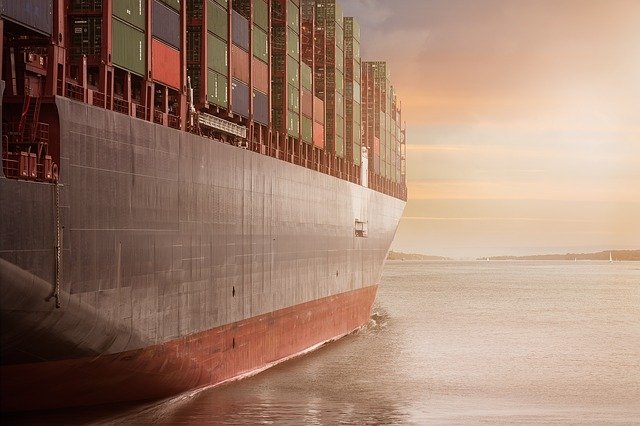Through the joint effort of Pace Group and the US International Development Finance Corporation (DFC), the construction of a new seaport in Poti has successfully completed.
The Poti New Sea Port’s official opening ceremony was attended by Georgian Prime Minister Irakli Garibashvili, Minister of Economy and Sustainable Development Natia Turnava, US Ambassador to Georgia Kelly Degnan, members of Georgia’s Cabinet and Parliament, and representatives of the diplomatic corps and maritime industry. The guests were addressed by Irakli Garibashvili, Prime Minister of Georgia.
“One of our Government’s key goals and priorities is to shape Georgia into a regional hub tapping into our location and potential. Let me single out the engagement of our key strategic partner, the United States of America, in this project, namely US$50m in financing allocated by the International Development Finance Corporation (DFC), another demonstration of Georgia’s being an attractive country for foreign investments, one with the largest transit and transport potential in the region,” the prime minister stated.
Irakli Garibashvili thanked Pace Group’s President Ioseb Dolidze and each employee of the company for successfully implementing a project of this scope, and for exhibiting remarkable social responsibility, especially in light of the pandemic, by creating hundreds of new jobs.
The Poti New Sea Port, with its value amounting to US$120m, is one of the largest among Georgia’s ongoing maritime projects. Notably, the financing allocated by the US International Development Finance Corporation is the organisation’s single largest investment into a project in the region.
“I’m delighted that the United States, through the Development Finance Corporation, has played a key role in the Pace Terminal’s construction. It is a demonstration of our continued commitment to Georgia’s prosperity and to the Georgian people. Georgia’s investments in becoming the safe, responsible transport partner come at an opportune time. These investments further Georgia’s ability to make global and regional connections when the world is looking for alternative routes and supply chains,” US Ambassador to Georgia Kelly Degnan said in her speech.
According to Degnan, this port is a key link between prosperity and security, and the United States is committed to assisting Georgia, a strategic partner, in developing port infrastructure. “Our mutual interests are served in an environment that respects freedom of navigation, access to waterways, the rule of law, and national sovereignty. This port is part of the physical lifeline connecting Georgia to Europe. It is also a symbol of Georgia’s continued Euro-Atlantic aspirations,” Degnan added.
A total of US$93m has been invested in the construction of the new seaport, with large hydrotechnical facilities and modern port infrastructure built, such as:
- A 260-meter berth
- Fully reconstructed breakwater structures
- 1.5 million cubic meters of soil removed from the Poti New Port harbour to further increase its depth to 13 meters
- Closed warehouses with a capacity of 50,000t, equipped with fully automated reloading systems manufactured in Europe
- Open storage areas amounting to 6ha
- Two new portable cranes exclusively manufactured and installed at the seaport, each with a load capacity of 100t
The project’s subsequent expansions, an endeavour valued at an additional US$30m, involves the construction of a new 230m deep-water (13m) berth. Modern port machinery and devices will be installed, such as a conveyor system and a ship-loader.
“This port symbolises Georgia’s imposing economic transformation since regaining independence in 1991. The Poti New Sea Port will create new jobs and spur economic growth, also empowering Georgia’s positions as a strategic and transit country linking the Caucasus and Central Asia to Europe, also bolstering trade. The Poti New Sea Port will also continue the years-long productive partnership between the United States of America and Georgia,” Kenneth Angell, Managing Director of the US International Development Finance Corporation (DFC), emphasised in his video address.
The berth and new port’s infrastructure allow for serving up to 50,000Mt cargo capacity bulk carrier and container vessels. The port will handle bulk and break bulk cargos, as well as containers.
After the project’s finalisation, the capacity of Georgia’s unified seaport infrastructure will increase by 3.5t. These opportunities and the port’s importance are discussed by Albright Stonebridge Group’s Chair and former Secretary of State Madeleine Albright in her letter celebrating the opening of the Poti New Sea Port.
“The Poti New Sea Port project offers greater economic opportunities to the residents of Poti, to Georgia, and every Black Sea and Caspian state. By transporting 3,000,000t of cargo via the seaport, everyone’s a winner. The United States of America is convinced that every country has the right to decide its role in relations with the rest of the world. But we also know that every country is entitled to real opportunities to trade in various markets. This instrument is part of putting to use trade and choice potential – this aspect imparting special importance to it not only from the point of view of trade and commerce, but also making a difference for all of us striving to ensure a better life for our families and countries,” Madeleine Albright’s letter reads.
The Poti New Sea Port will give a tremendous boost to the country’s port capacity and transit potential, also offering new opportunities for redirecting new cargos to Georgia’s transport corridors.






 101,054,713 tons of goods were handled for the first time in Tanger Med port complex, up by 25% compared to 2020. Indeed, the tonnage handled by Tanger Med port complex represents more than 50% of the overall tonnage handled by all Moroccan ports.
101,054,713 tons of goods were handled for the first time in Tanger Med port complex, up by 25% compared to 2020. Indeed, the tonnage handled by Tanger Med port complex represents more than 50% of the overall tonnage handled by all Moroccan ports.




